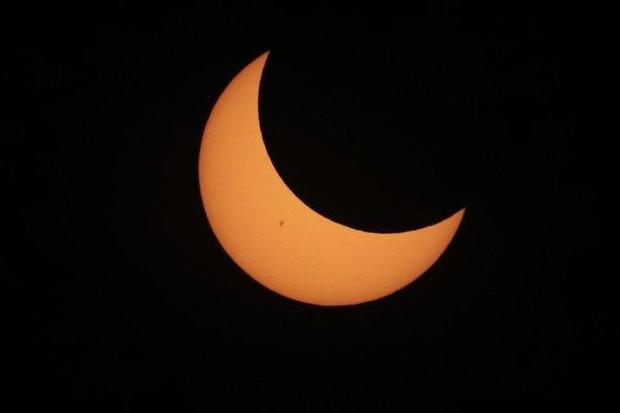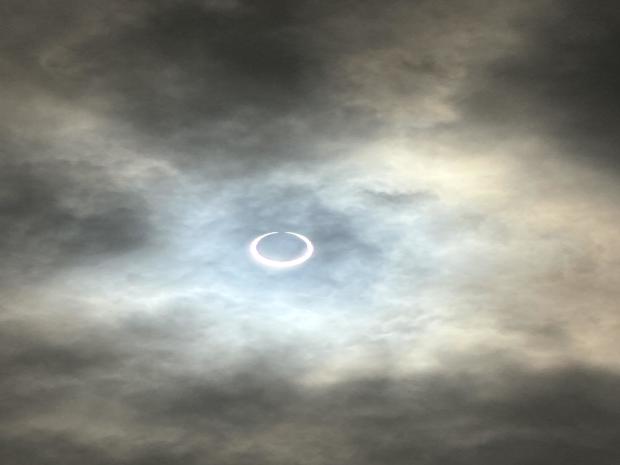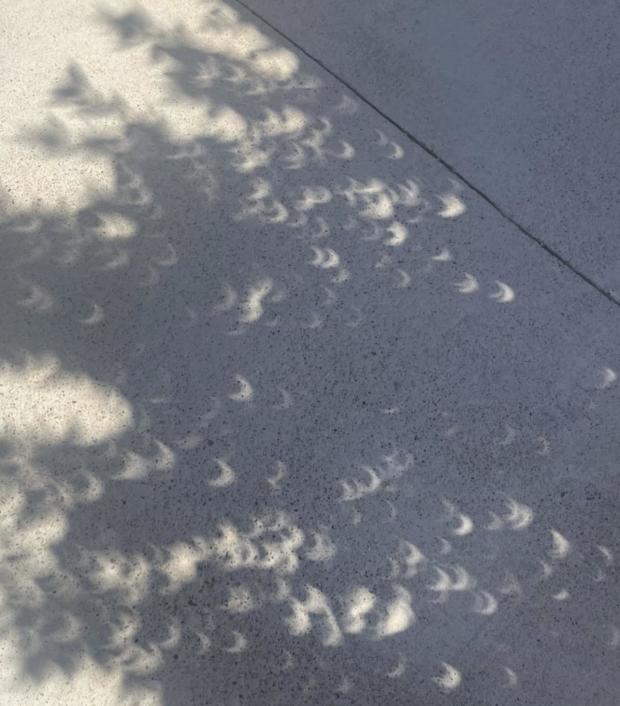North Texans watch "Ring of Fire" eclipse in the sky and on the ground!
NORTH TEXAS (CBSNewsTexas.com) - It's a bird...it's a plane...it's an eclipse! North Texans were able to partially view the "Ring of Fire" annual solar eclipse Saturday up above and down below.
Our Alexis Wainwright spoke to Dr. John Mulchaey with Carnegie Science and Perot Museum of Nature and Science CEO Dr. Linda Silver about the celestial event.
Mulchaey explained why it's called the "Ring of fire:" Since the moon is a bit closer to Earth, it can't fully cover the Sun and so it leaves a ring of solar light. He also underscored the need to be safe and use proper eyewear specifically designed to look at the sun.
The Perot Museum hosted North Texans to view the eclipse and celebrate science with fun and games, live music and food trucks.
"We're so excited," Silver said. "This is the first of two eclipses Dallas is gonna experience over the next six months. We're kind of thinking of this as our appetizer eclipse because it's a partial eclipse."
Silver mentioned the next celestial celebration on the museum's calendar—a total eclipse expected April 8, 2024, which will create total darkness in the middle of the day for about four minutes.
In the sky
Wainwright also watched the eclipse—wearing safety glasses, of course—with some 4,000 others at the Perot Museum.
Viewer Zach Townsend sent in the photo below of the celestial event just west of San Antonio.
Meanwhile, NASA shared a special feed on social media where you can see the eclipse from different cities across the country!
On the ground
Now if you weren't able to watch the eclipse in the sky with special safety glasses, you could also see it underneath trees!
Or even inside your home!
Our Chief Meteorologist Scott Padgett explained the phenomenon. He said small openings between objects, such as tree leaves act, like pinhole camera apertures. Those small openings allow the sun to be shown on the ground and in this case, the sun is partially blocked by the moon, hence the crescent shapes. The same phenomenon happens all the time, only when there's no eclipse, the images through the shadows show the sun in its entirety—a circle.
Some of our viewers shared photos that you can see below!











